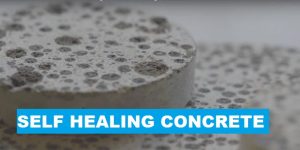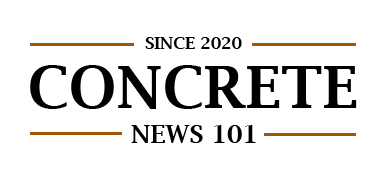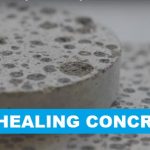In recent years, there has been heightened interest in the area of green material and green building solutions with the construction industry. Almost every research organizations around the globe are working on developing and improving current construction technology, practices, and materials in order to align it towards green compliance and certification.
The manufacturers of building and construction materials are also working around the clock to develop products and solutions to capitalize on green status. Apart from public and private organizations; the government of the countries also has implemented some policies to promote green initiatives. One such policies that almost every country had initiated are related financial support to companies in the form of tax benefits.
Background on Green "Stamps"
Every country on the world map has develop some kind of internal agenda and guidelines towards this initiative. For example, in Singapore it is called Green Mark which is certified under Building and Construction Authority, while in Australia it is called Green Star regulated under Green Building Council Australia.
In Malaysia, Architect Association of Malaysia is the one responsible in developing and implementing the guideline for green certifications for products and projects. The association has come up with Green Building Index Tool as the reference document for the green status assessment and accreditation.
The Green Building Index (GBI) is already recognized as Malaysia’s green rating tool for buildings and townships to promote sustainability in built environment and raise awareness among the construction industry players.
Alternatively, you also could choose to certify your products under myHIJAU, which is also acceptable to be selected and used in constructions that aiming for green building status.
Assessment Criteria for Green Building Index
Part | Category | Maximum Points |
1 | Energy Efficiency | 35 |
2 | Indoor Environmental Quality | 21 |
3 | Sustainable Site Planning & Management | 16 |
4 | Material & Resources | 11 |
5 | Water Efficiency | 10 |
6 | Innovation | 7 |
These are the main categories where the projects, construction, and townships are measured. However, each of these categories are further divided into many sub-categories which will detail out the points allocation for each element within the construction process and activities.
Once the points are given for each of the categories, it is then tabulated and the final rating is tabulated. The companies and projects are then awarded with the certification according the points accumulated; these companies can be awarded Platinum status, Gold Status, and Silver status, as well as just certified status.
Certification Criteria for Green Building
Total Points | GBI Ratings |
86 to 100 | Platinum |
76 to 85 | Gold |
66 to 75 | Silver |
50 to 65 | Certified |
GBI for Paving Materials
The GBI guideline and tool is a very comprehensive document and it covers almost every aspect of the construction processes and activities. However, this article will focus specifically on the Solar Reflectance Index requirement for Paving Materials.
This requirement comes under third category of the GBI, which is Sustainable Site Planning & Management with sub-category of Greenery & Roof for Hard-Scape and Greenery Application. Under this scope the minimum requirement for Solar Reflectance Index (SRI) is 29.
Therefore, for any paving products that need to be used in green building status aspirant projects and constructions, shall achieve SRI value of at least 29. Though the number sounds small, it is not an easy task to achieve that in paving products. For asphalt paving there is no way of achieving that number due to the nature of the material.
However, for concrete paving products (interlocking concrete pavers), it is highly possible to achieve the SRI of 29, but of course with some improvement in the mix design and raw materials.
Why Need Solar Reflectance Index (SRI)
Urban development is an extremely important activity for economy stimulation and growth. Town planners always find ways to build and develop urban area with the hope generating better economic value from that area. However, the same development process has brought in some other effects to the surrounding.
Due to increased development activities, it also leads to increased hardscape area within the urban area; thus, increasing the surface and air temperature in that surrounding compared to suburban areas. Furthermore, we don’t expect to any potential decline in these development activities as well; in fact, more and more suburban are being urbanized.
The increase in the surrounding temperature is known as heat island effect. There could be many correlating factors that contributes to the increased heat in urban area; however, solar absorption from the hardscape pavement area has been identified as one of the main causes for this.
The buildings and paved surface are always exposed to the solar energy (heat); thus, absorbing more heat directly from the sun. This heat is eventually released back to the surrounding. This cycle increases the surrounding temperature, and as result of that the usage of air conditioning will also increase within the buildings and infrastructures in that area, which obviously leads to increased energy consumption and that leads to many other environmental related problems.
How to Test for Solar Reflectance Index (SRI)
SRI stands for Solar Reflectance Index, and as the name sounds, it is the measurement of how much of solar (heat) that hits the pavement surface is reflected back.
The SRI is measured using emissometer, which measures the surface solar reflectance and emittance value. The complete test procedure is outlined in ASTM C1371-15 (Standard Test Method for Determination of Emittance of Materials Near Room Temperature Using Portable Emissometers). Once the values are measured, the value then used in the equation provided in ASTM E1980-11(2019) to compute the Solar Reflectance Index.
Solar Reflectance – is a value measured on the solid material which is indicated on a scale of 0 to 1. The value 1 means that all the solar directed to the material surface is reflected back, while the value 0 means none is reflected. Based on literature, light colors tend to have much higher reflectance value compared to dark colors.
Emittance – is measurement of how well the surface let go the absorbed heat, and also reported on a scale of 0 to 1. The value 1 indicates 100% emittance. Most of the concrete products has an emittance value of 0.85 to 0.95.
Final Note
So, in theory if your concrete pavement material able to achieve SRI of at least 29, then it can be considered to be used in hardscape pavement at projects that looking forward for GBI status certification. However, the concrete pavement products must be used to cover at least 50 percent of the total hardscape pavement area.










